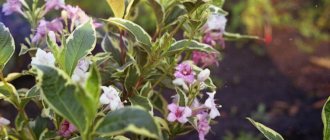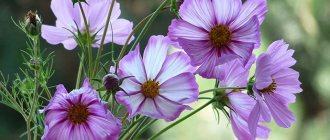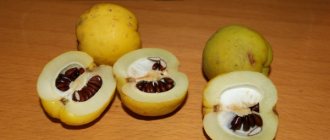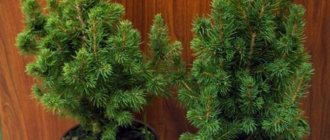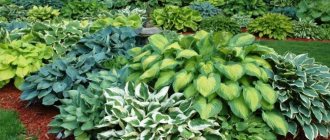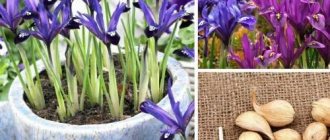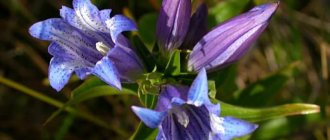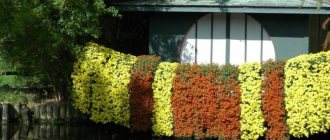Description
Godetia grows as a bush. It may have a pyramidal or spreading shape. Godetia reaches a height of 60 cm and has grassy shoots in early summer. Over time they become woody.
The leaves on the shoots are arranged alternately. They are narrow and elongated. The flowers of this plant can be monochromatic or multi-colored. Their shade depends on the variety of godetia. The flower can be white, pink, burgundy, peach or scarlet.
Godetia flowers have the shape of a bell or rose (double). They are collected in inflorescences in the form of a brush. This plant blooms from July until late autumn (around the end of October). Each of its flowers remains open in any weather.
When frost occurs, cylindrical boxes with seeds appear on godetia. You can get a new plant from seeds if planted within 3-4 years after collection. They cannot be stored longer, because the godetia seeds will lose their viability.
Varieties and types
Godetia grandiflora is not the only species planted by gardeners in the country. There are four large groups, each of which contains several dozen excellent, very beautiful varieties:
- Godetia grandiflora. The stems of this plant are erect; at the beginning and middle of the growing season, they are herbaceous and fragile (therefore, the flowers can lie on the ground). At the end of the season, the stem of Godetia grandiflora becomes woody and becomes denser. The leaves are lanceolate and small. The bushes are compact, plant height ranges from 20 to 40 cm. The inflorescences are very large, up to 10 cm in diameter. The flower shape is cup-shaped or bell-shaped. The petals are very delicate, silky, and can be white, pink, red, cherry or lilac. Flowering begins in mid-July and ends around October with the onset of the first frosts. Most often, large-flowered godetia is used to decorate borders and carpet flower beds.
- The lovely godetia can grow up to 60 cm. It is a bushy plant with smooth, erect stems that are not very resilient. The leaves are narrow, pointed. The flowers are medium in size, their diameter sometimes reaches 5 cm. The shape of the petals is spade-shaped, the surface is satin. The beautiful coloring is most often red, but flowers of purple or crimson hue can be found. This variety of godetia blooms from early July to mid-September.
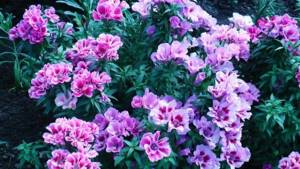
- Terry godetia is one of the varieties of large-flowered variety. Depending on the density of the inflorescences, double varieties are divided into: semi-double, double and densely double. Such flowers are usually called azalea-shaped; they are very good in compositions and can have a lot of shades.
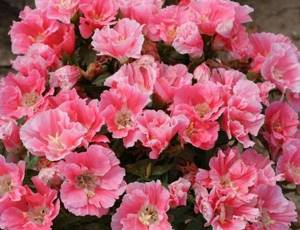
- Tall godetia can grow up to a meter in height. This variety has both regular and double flowers. Thanks to their long and strong stems, tall varieties are perfect for cutting, so they are actively used in bouquets.
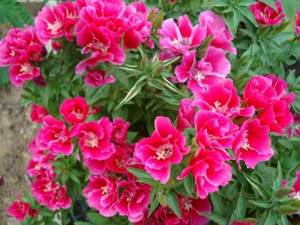
Below are the most popular varieties of godetia, the merits of which will help you to see photos of these flowers.
Cybill Sherwood
Compact bushes growing up to 30-40 cm. The stems of this godetia are colored greenish or pinkish. The leaves are pointed, very elongated. The flowers have a semi-double structure and are pale salmon in color. The petals tend to lighten from the middle to the edge, acquiring a more pink color. The diameter of the inflorescences is quite large - about 5 cm.
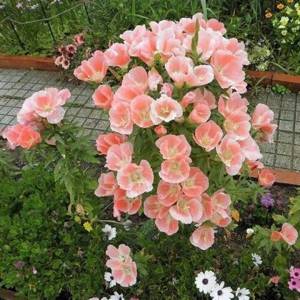
Weiser Ostrich
A large-flowered annual bush about 40 cm high. The flowers are snow-white, have a wavy edge, their diameter is about 6-8 cm. This variety loves the sun, so it must be planted in well-lit areas. Godetia Weiser Ostrich tolerates cold well, making it suitable for cultivation in the northern regions of the country. The delicate plant will bloom until October, until frost begins.
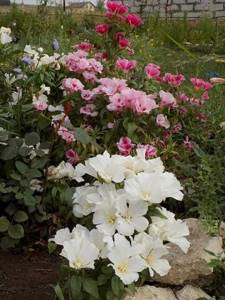
Advice! The Weiser Ostrich variety is recommended to be planted in the foreground of borders, ridges and complex flower beds.
Bohemia
Bush variety of mixed colors. Godetia variety Bohemia can be grown both in open ground and in pots or boxes. The bushes are compact, up to 40 cm high, the inflorescences are painted carmine red and white. The flowering of this species is very abundant and long lasting. The big advantage of Bohemia is its early flowering - the buds open several days earlier than other varieties.
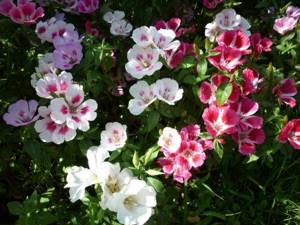
Lava
A semi-double variety, the bushes of which rarely grow above 40 cm. The flowers are large, carmine-red, the edges of the petals are wavy. The plant is very resistant, can grow both in the sun and in partial shade, tolerates cold well, and can bloom even on wet, wet soils.
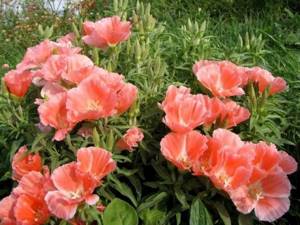
Important! In order for the Lava bush to have the shape of a neat ball, it is necessary to follow a planting pattern of 20x40 cm.
Bride
Large azalea-shaped inflorescences of this godetia variety are painted in a snow-white shade. The flowers are double, very large (about 10 cm in diameter), with silky petals. Sometimes pinkish shades may appear on the Bride’s petals, which makes the flower even more beautiful and interesting.
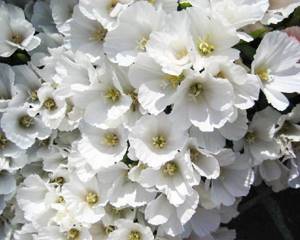
Orange Glory
Semi-double variety with an average bush height of up to 45 cm. The bushes are spherical and compact. The inflorescences are large, dense, painted in a soft orange hue with pink undertones. It is recommended to plant godetia in the sun; it tolerates temperature drops and fluctuations well. The best place for Orange Glory is the front of flower beds and borders.
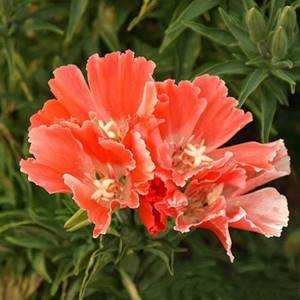
Maiden Blush
Large-flowered godetia, intended for planting in open ground, in pots and boxes. Luxurious lush bushes of average height reach 40 cm. The flowers are large, painted in a rich pink color. The diameter of the flower varies from 5 to 8 cm, the edges of the petals are wavy, which gives the inflorescence volume. Godetia blooms from July to October.
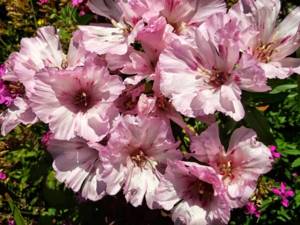
Honey Moon
This godetia is a mix, the package contains a mixture of red, pink and white flowers. The bushes are spherical, small (up to 35 cm). Godetia Honey Moon will bloom well in a sunny and warm place with fertile, loose soil. However, the plant also tolerates poor conditions: partial shade, cold, high soil moisture.
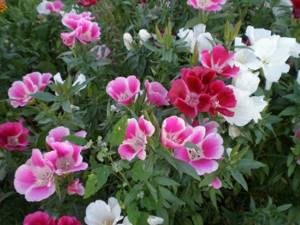
Rembrandt
A terry variety with hemispherical compact bushes, up to 30-35 cm high. Godetia leaves are lanceolate, elongated, and the shoots are colored greenish-pink. The edges of the petals are wavy, the flowers are pink, covered with small spots of red along the edges. The diameter of the flower is 5-6 cm, the edges of the petals are slightly indented.
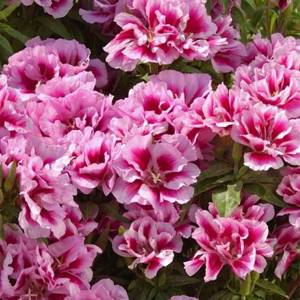
Meteor
This variety of godetia grandiflora amazes with its rich shade of flowers - carmine red. Petals are glossy and shiny. The inflorescence is dense, densely double. It is necessary to plant compact meteor bushes according to a 30x40 cm pattern, then their shape will be correct and the bush will be spreading.
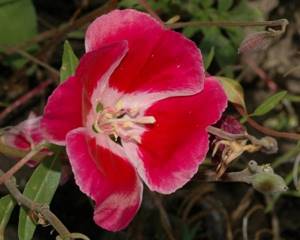
Types and varieties of godetia
Scientists have identified twenty species of godetia. Each of them includes different varieties. But in our country, large-flowered, double and lovely godetia are especially popular, since these species tolerate the Russian climate well.
Godetia grandiflora
Godetia grandiflora is a relatively low plant. The length of its shoots does not exceed 40 cm. The bush has leaves tapering towards the base and large bell-shaped flowers (up to 100 mm in diameter).
The flowers are collected in a raceme at the tip of the stems. Their shade can be white, pink, lilac, red, scarlet, crimson or dark red. The following varieties belong to this type:
- Orange Room is a godetia up to 50 cm high with a semi-spreading bush shape. The green-red hue of the stem and narrow leaves are one of the characteristics of this variety. Flowers reach a diameter of up to 50 mm and have the shape of a wide bell. They are red-orange with a smooth edge of the petals.
- Weisser Schwann is a compact godetia no more than 35 cm high. It has light brown shoots below and green above. The flowers of the plant are satiny white, cup-shaped. They have petals with smooth edges and reach a diameter of 60 mm.
- Summer's Darling is a godetia with pink and burgundy flowers.
- Sybil Sherwood are small, creeping bushes up to 40 cm high. They delight the eye with bright pink inflorescences.
- Memoria is a white flowered variety. If you look closely, you can see a slight shade of pink.
- Rembrandt - godetia with pink flowers covered with red spots.
- Meteor is a variety with dark scarlet bell-shaped flowers. The petals of the bells have a velvety surface.
- Maiden Blush is a plant with creamy white flowers. This shade fades to hot pink at the base of the cup.
- Orange Glory - godetia with soft pink inflorescences.
- Satin Rose is a variety with pink-cream flowers. Satin Rose's petals are wavy at the edges.
Godetia amoena
The lovely godetia grows up to 60 cm in height. It has erect stems with a smooth surface.
Over time, the shoots partially become woody. This plant has narrow, pointed leaves and cup-shaped flowers up to 50 mm in diameter. The flower petals are colored raspberry-lilac or red-pink (there are other shades of red).
This type includes the following varieties:
- Kirshkenigin - godetia with pink-red flowers.
- Crystal Snowflake is a tall bush variety. Their height reaches 75 cm. This godetia has white flowers.
- GraceRosePink is also a tall variety. It has bright crimson inflorescences.
- Satin is a compact representative of the species with pink bell-shaped flowers. Their petals become darker as they approach the middle.
- Scarlet Red is a variety of godetia with pink-red inflorescences. Scarlet Red's petals are lighter near the center.
Godetia terry
Terry godetia, as a separate species, does not exist in nature. Lush flowers are found in all other species. The variety Rembrandt from the large-flowered category and Sybil Sherwood also have double inflorescences. Other popular varieties:
- Diamond. It is characterized by bright red inflorescences with white spots.
- The bride is a godetia with white flowers. If you look closely, you can notice a soft pink tint.
Types and varieties
Godetia flower - growing from seeds at home
There are four types of godetia, which are most often used to decorate gardens and flower beds.
Large-flowered
Godetia grandiflora is the most common type of flower and is distinguished from other varieties by its branching stems. This large-flowered bush grows up to 45 centimeters in height. Not afraid of droughts and frosts.
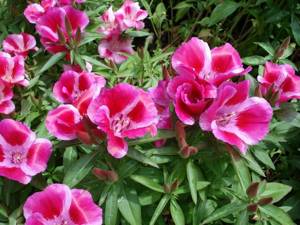
Large-flowered Godetia species
Popular large-flowered varieties include:
- The bride is a flower with double petals, painted white with a delicate pinkish tint.
- A diamond is a double flower, the petals of which are painted white with red spots.
- White swan is a low-growing plant 25-30 centimeters in height with snow-white petals.
- Rembrandt is a small flower that can grow up to 30 centimeters. The petals are pink, with slight white dots.
- Meteor is a plant with purple-white petals.
- Sybil Sherwood - grows up to forty centimeters, blooms pinkish-white.
- York - height reaches 45 centimeters, blooms in mid-summer. The petals are white, with a purple tint.
- Orange Glory (Orange Glory) is a variety with non-double flowers of bright orange color.
- Blitzstral is a spreading shrub with single red flowers.
- Weisser Schwann is a low-growing shrub whose height reaches 35 centimeters. The petals are painted white with a scarlet tint.
Important! Weisser Schwann is suitable for growing outdoors as it is frost resistant.
Lovely
This type of godetia has smooth and erect stems, which over time begin to become covered with a durable crust. It begins to bloom in early July. Flowering lasts three and a half months.
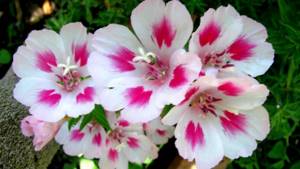
Lovely godetia during flowering
Among the most popular varieties are the following:
- Kirshkenigin - blooms with bright red-pink petals.
- Crystal Snowflake is a tall variety whose flowers are pure white.
- Rosea is an elongated shrub with pinkish flowers.
- Maiden's Blush is a low-growing bush with bright pink flower petals.
- Red wine is a medium-growing, frost-resistant variety that can be grown in open ground. The petals are red, with a pinkish tint.
Terry
Double Godetia is a common flower variety that is ideal for growing in the garden. The main distinguishing feature of this species is the lush double flowers that bloom in mid-summer.
Terry varieties include:
- Memoria is a plant with pale pink petals that appear perfectly white from a distance. The pinkish tint is noticeable only upon examination.
- Monarch is a godetia that grows up to twenty centimeters and is suitable for growing in a pot. Blooms crimson.
- Moth is a low-growing bush that blooms with snow-white flowers in summer.
- Lava is a semi-double variety with wavy reddish petals.
Azaleaceae
Godetia azalea flower is the best choice for people who want to quickly decorate their flower bed.
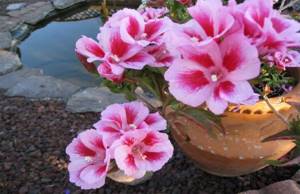
Summer's Kiss is one of the most beautiful azalea flower varieties.
Additional Information! This plant requires little care and can adapt to any weather conditions.
Popular azalea-flowering varieties include:
- Summer paradise - godetia with large pink flowers. Blooms in mid-July.
- Summer's Kiss is a variety with red and pinkish petals.
- Maiden Blush is a low-growing flower bush with bright buds.
- Beauty - godetia with red flowers.
Growing godetia from seeds
Godetia is a very unpretentious representative of the flora. It can be grown from seeds directly in open ground. This method is better than preparing seedlings. By replanting ready-made seedlings, you will damage many of them. Godetia, in such cases, is not accepted after planting.
Sowing seeds
Regardless of the variety, seeds should be sown in the second half of April. In warm regions, planting for the winter is allowed. Both in autumn and in spring it is necessary to pre-disinfect the seeds. This can be done with a weak solution of potassium permanganate. Soak the planting material in it and leave for half an hour. This will help protect the seedlings from diseases after germination.
Godetia is planted at shallow depths. A depth of 5 mm is sufficient for seeds. But the distance between the holes should be at least 25 cm. If the soil has not yet warmed up in April, water it generously with warm water. After sowing the seeds, water again with heated water and cover the soil with film.
Raise the film daily for ventilation. Godetia may produce too dense shoots. In this case, it will need to be thinned out.
Seedling
In cold regions, planting Godetia in seedlings is recommended. This way you can achieve flowering earlier. For this purpose, containers with nutritious soil are prepared. They must have a good drainage layer. The seeds are planted in containers and covered with film. They should germinate in 1.5 weeks.
After the sprouts appear, the film can be removed.
Godetia is ready to dive if it already has two leaves. The sprouts are picked and planted in different pots. After this, you need to wait 2 weeks and start fertilizing the seedlings. It can be planted in a flowerbed when the sprouts reach a height of 60 mm.
Growing Godetia Beauty from seeds
Growing crops from seeds at home is done using seedlings. The unpretentious godetia has rapid germination.

To grow seedlings, it is necessary to comply with sowing dates and basic care rules.
Time for sowing seedlings
Seedlings are sown in late March or early April. When several permanent leaves appear and consistently warm weather sets in, the young bushes of the plant are planted in the soil.
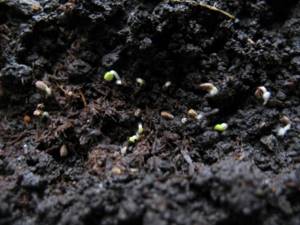
Flowering of the crop occurs 1.5-2 months after the appearance of the first shoots
Container and soil for seedlings
Plastic or wooden containers of small height are chosen as containers. The container is pre-disinfected. A drainage layer is placed at the bottom of the box and filled with loose, sifted soil mixture fertilized with complex preparations.
The composition for godetia is prepared from garden soil, sand, peat, which is pre-disinfected.
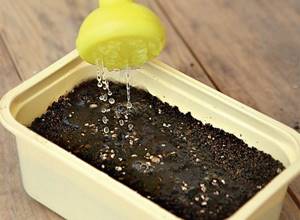
Before sowing, the substrate is thoroughly moistened
Sowing seedlings
Small godetia seeds do not require special preparation. To disinfect seed material, seeds can be treated for several minutes with a weak solution of potassium permanganate.
Since the seeds are tiny, you should mix the seed and sifted river sand. The mixture of sand and seeds is evenly distributed over the surface of the soil and sprinkled with a thin layer of earth.
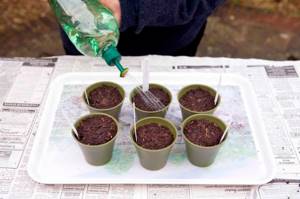
The seeds of the plant are hardy and remain viable for 3-4 years.
Seedling care
Well-lit and warm places are suitable for containers with seedlings, without direct exposure to cold air and drafts. The container is covered with plastic film or glass to create a greenhouse effect. Every day the container with the crops is ventilated and the film is opened for several hours.
The crop requires the most gentle watering from a spray bottle to evenly distribute the liquid. This will protect the seeds from being washed into the deeper layers of the soil. Warm water is used to water crops, which further stimulates germination. Godetia “prefers” moderate watering.
After 10-12 days, the first shoots appear. After the sprouts appear, the shelter is removed. Plants are picked when 2-3 true leaves appear. The intertwined shoots are separated using a spatula. Roots larger than 3 cm are cut to stimulate the development of strong and healthy lateral roots.
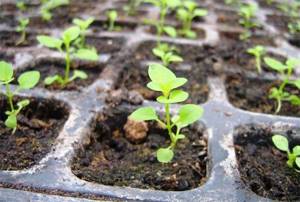
The sprouts are carefully removed and transplanted into separate pots or containers measuring 9x9 cm, 2-3 seedlings each
Planting in open ground
Godetia is planted in a flowerbed when the sprouts do not yet have flower stalks. If they appear, the flower cannot be replanted. The sprouts are removed from the pots along with the soil. This must be done very carefully.
If the roots are exposed, the godetia will die. The seedlings should be placed at intervals of 25 cm. It is better to add white clay to the holes. It stimulates the growth of godetia.
When choosing a day for landing, make sure that the weather is cloudy. The hot sun can harm fragile shoots. If the day is sunny, start planting only after sunset.
Spring planting of seedlings
Young shoots are planted in the flowerbed at the end of May. In this case, godetia will bloom by the beginning of July. Before the final transfer to the street, it is necessary to harden off the fragile shoots. To do this, pots begin to be taken out of the house every day from the beginning of May. First, they are left in the open air for 2 hours and the interval is gradually increased.
Landing before winter
Planting godetia for the winter is possible only in warm regions and provided that the cultivation will take place from seeds. Using seedlings in late autumn is undesirable, since most of the sprouts will die after falling into open ground.
There are no such problems with seeds. They gain resistance to cold and disease. When Godetia seeds fall into the soil in the fall, they do not have time to sprout, but are well saturated with moisture. As a result, the flower blooms much earlier than when planted in the spring.
Location, soil
Godetia loves well-lit places. In shaded areas, any variety will bloom with small flowers. Sufficient light is not the only requirement for growing this plant. You need to choose a place with loamy soil. It can be slightly acidic or neutral.
Having chosen a suitable area, prepare it for planting godetia. For both seeds and seedlings, you need to dig up the soil well, water it and add mineral fertilizers and wood ash. In addition, you need to fertilize the soil with humus at the rate of 5 kg of humus per 1 square meter. m plot. You can plant seeds or sprouts in the prepared soil.
Caring for godetia in open ground
Godetia does not belong to the category of finicky representatives of the flora. But this plant also requires care so that it delights you with colorful flowers all summer. First of all, you must ensure proper watering, weeding and fertilizing.
Watering
Godetia is very sensitive to both excess and lack of water. It should be watered moderately, without over-watering or over-drying. The best solution for this is a drip irrigation system. But if you don’t have one, you can do the task manually. The main thing is to pre-expose the water to the sun so that it warms up.
Spraying the leaves is very useful for godetia. This procedure helps protect the leaves from drying out. But they should be sprayed only after sunset. Otherwise, burns will appear on the leaves.
Top dressing
In order for godetia to bloom profusely, it needs to be fed 2 times a month. At first, this can be done with any complex fertilizers. After the buds appear, use mineral fertilizers with potassium and phosphorus. They promote active flowering. Never buy nitrogen-based products.
This chemical stimulates the growth of foliage, not flowers.
Weeding
You need to weed the bushes regularly to get rid of weeds and improve soil ventilation.
Loosened soil will dry out well even after heavy watering. This will allow you to protect the godetia roots from rotting.
Formation
Godetia is a bush with tender shoots that are not recommended to be pruned. You can achieve abundant flowering in another way - by removing wilted flowers and dried leaves. The flowers of this plant bloom for 3 days. Then they need to be removed to make room for new buds.
Tall varieties of godetia need support. They must be tied to pegs, otherwise the tender shoots will break under the weight of large inflorescences.
After flowering
In place of the flowers, this plant produces boxes with seeds. They ripen a month after the godetia fades. The boxes can be cut off only after they have darkened. After cutting the fruits, scatter the seeds out of them, dry them and store until the next season.
Godetia outdoor care
Godetia is an unpretentious plant; planting and caring for it is quite simple. But proper watering is very important for her. If there is excessive watering and dampness or severe dryness of the soil, it will become stunted and may even disappear. You need to water it as needed so that the soil is always slightly moist.
Fertilizers need to be applied once every 2 weeks or once a month, this will depend on the fertility of the soil in your area. For this purpose, special complex fertilizers for flowering annuals or nitrophoska are used.
Of course, caring for godetia includes removing weeds and loosening the soil. You can reduce this work by mulching the soil around the plants.
Tall varieties require tying to a support.
This flower does not need any special pruning. You can trim some shoots a little to better form the bush. For abundant and long-lasting flowering, it is necessary to constantly remove dried flowers, as new buds will appear in their place.
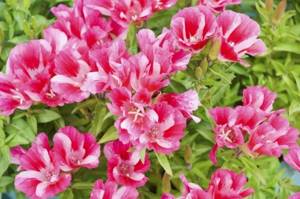
If you follow simple rules for growing godetia from seeds, it rarely gets sick. But if the planting is neglected or excessively moistened, it can be affected by fungal diseases. In this case, fungicides will come to the rescue. But if affected by root rot, the diseased plant must be immediately removed from the flowerbed; treatment is useless.
Sometimes, in the presence of weeds, godetia may also suffer from leaf-eating insects. Timely weeding and mulching will help to avoid this.
Damage by diseases and pests
Godetia, like other plants, can suffer from harmful microorganisms and parasites. Its most common diseases:
- Root rot caused by a fungus. This disease occurs due to excessive watering. Its symptoms: lethargy of the leaves, the appearance of brown spots on them, drying out, blackening of the roots. There are no remedies to treat rot. You can only remove the affected bushes from the flowerbed so that the infection does not spread to neighboring seedlings. The diseased godetia should be burned, after which you will need to disinfect the tools and treat the soil with copper sulfate.
- Powdery mildew. This disease manifests itself as a white coating on the leaves. In this case, godetia is treated with a fungicide.
- Downy mildew. A sign of the disease is small spots on the leaves. The disease is also treated with a fungicide. To avoid the appearance of downy mildew, you need to plant the bushes away from melons.
- Rust. The disease got its name because of the red spots. For treatment you will need 1% Bordeaux mixture.
- Aphids eating leaves. Insecticides work well in the fight against aphids. But you can also use folk remedies: soap solution, as well as infusions of tobacco or wood ash.
Godetia transforms gardens, parks and balconies. If you care for her properly, she will give you joy until late autumn.
